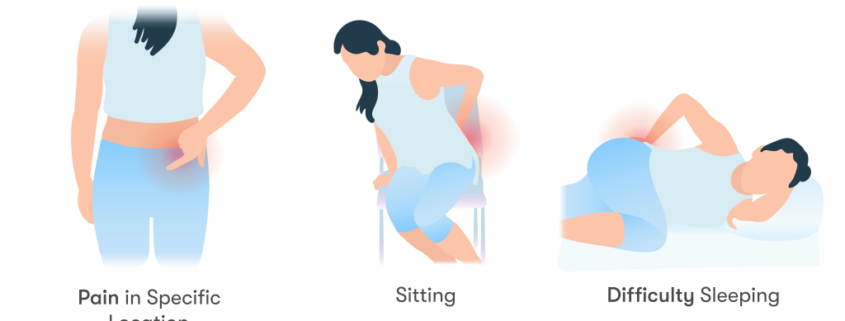Sacroiliac Joint Dysfunction

Overview
Sacroiliac joint dysfunction, also known as SI joint pain, is a condition that affects the sacroiliac joint, located in the lower back and connects the spine to the pelvis. As many as 30% of lower back pain sufferers may have this condition, making it quite common.
Types
Medically, there aren’t ‘types’ of sacroiliac joint dysfunction. However, symptoms and severity can vary between individuals. Some might experience debilitating pain, whilst for others, the condition might cause milder discomfort that comes and goes.
Causes
Often, sacroiliac joint dysfunction is caused by either too much or too little movement in the sacroiliac joint. Excessive movement, or hypermobility, can cause pain and instability. Limited movement, or hypomobility, can cause muscle tension, resulting in pain. Factors like previous injury, pregnancy, arthritis, infection, or ageing can contribute to SI joint pain.
Symptoms
Common symptoms of sacroiliac joint dysfunction include lower back pain, pain in the buttocks and thighs, difficulty sitting in one position for a long time, and stiffness or limited range of motion in the lower body.
Diagnosis
The diagnosis of sacroiliac joint dysfunction involves a physical examination, patient history, and diagnostic tests. Doctors may apply pressure to certain areas to determine the origin of the pain or ask the patient to perform specific movements. Imaging tests like X-rays, CT scans, or MRI are often used to identify abnormalities in the joint.
Treatment Options
Treatment for sacroiliac joint dysfunction typically starts with non-surgical interventions. This could involve physical therapy, changes in activity levels, painkillers, or supportive devices. Cortisone injections can provide temporary relief by reducing inflammation in the joint. If conservative treatments fail, surgical options like sacroiliac joint fusion might be considered.
Living With Sacroiliac Joint Dysfunction
Living with SI joint pain can be challenging, but there are things a patient can do to manage symptoms. Regular exercise, tailored by a physical therapist, can strengthen the muscles around the SI joint and reduce discomfort. Heat or cold therapy can alleviate acute pain episodes, while over-the-counter medications can help manage ongoing pain. It’s also essential to maintain good posture when sitting, standing, and sleeping.
When to Seek Help
You should always seek medical attention if the pain becomes unbearable, disturbs sleep, or impedes daily activities. Further, if conservative treatments haven’t provided relief after a few weeks, it’s time to consult with a healthcare provider to discuss other treatment options, possibly including surgery.
Remember, no one should have to live with untreated pain. If you are experiencing symptoms of SI joint dysfunction, seek help right away. An early diagnosis and appropriate treatment plan can greatly improve your quality of life.
